DTC Paid Acquisition Trends 2025: Brands Winning With Ads

The DTC trends reshaping acquisition strategies in 2025 go far beyond simply increasing ad spend. They require fundamental shifts in how brands approach creative, data collection, and channel diversification.
The DTC market now stands at $212.9 billion, up 16.6% from 2024. Yet rising costs and platform changes have forced a strategic reset.
Brands that simply increase ad spend are losing ground. Those analyzing competitor creative, testing ad formats rapidly, and leveraging real-time intelligence reduce CAC 30–35%.
This guide analyzes leading DTC brands and their latest paid acquisition tactics on Meta and TikTok. The data is backed by Trendtrack's database of 397,803+ Shopify stores.
Why Ad Strategy Matters More Than Ever
The DTC landscape has fundamentally shifted in three critical ways:
1. First platforms dominate conversion
TikTok Shop generated over $11 billion in sales across Southeast Asia and surpassed $1 billion in US/UK markets. Nearly one in three daily US TikTok users now purchase directly within the app.
Key metrics:
- Social commerce represents 19.4% of total ecommerce sales
- TikTok Shop accounts for 66% of social-shopping GMV
- In-app purchasing is now mainstream behavior, not experimental
2. Rising costs demand smarter creative
Meta CPMs continue climbing in competitive categories like apparel, beauty, and home goods. Companies spending over $500,000 annually on influencer marketing jumped from 11% to 14.5% year-over-year.
The shift:
- Winning brands aren't spending more—they're spending smarter
- Benchmarking competitor creative reveals winning patterns before scaling
- Testing and iteration replace expensive guesswork
3. Creative benchmarking drives measurable results
Leading brands like can cut CAC. They can accomplish this by studying competitor ad patterns, hooks, and conversion funnels.
The process:
- Track which competitor ads run longest (signals profitability)
- Identify winning creative structures across categories
- Validate concepts with real-time competitive intelligence
- Test proven formats and scale winners
The advantage now goes to brands that track, test, and adapt ad creative faster than competitors.
Best ad spy tools like Trendtrack reveal which stores are growing, which ads are running longest, and which creative structures convert. This intelligence transforms paid acquisition from expensive experimentation into data-backed growth.
Build Smarter Marketing Funnels
Match ads to landing pages and understand how successful brands structure their funnels. Get inspiration for your own marketing strategies.
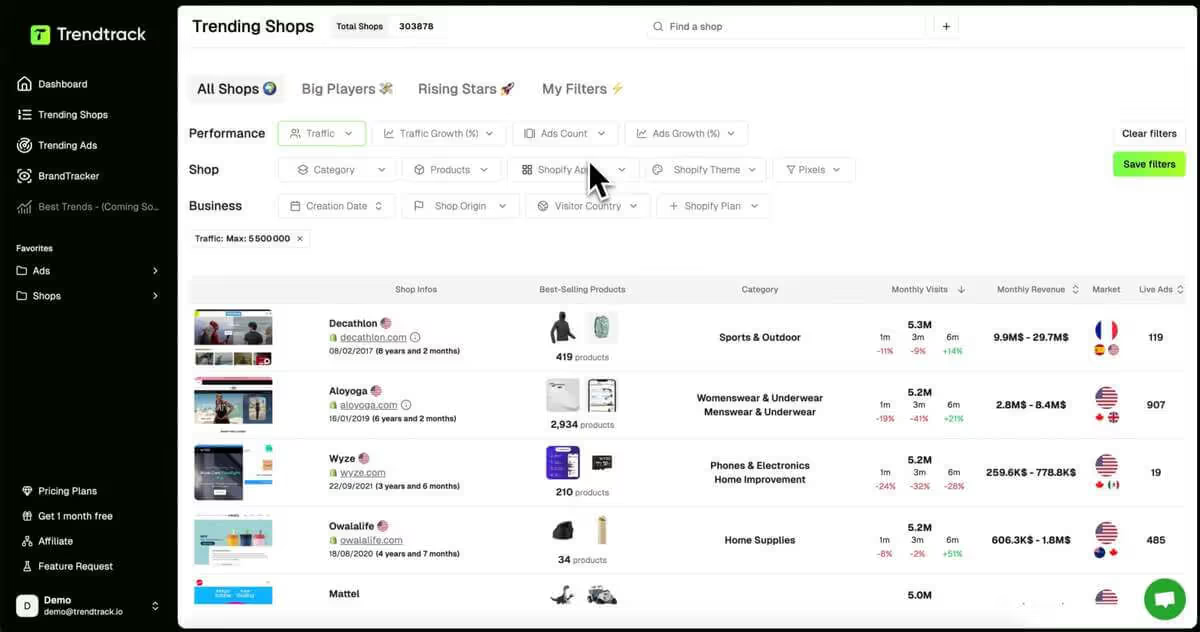
DTC Ad Trends 2025: What's Actually Working
Different approaches to advertising. One common thread. Data-backed creative strategy that delivers measurable results.
These brands represent some of the top DTC brands of 2025. Not because they spend the most, but because they've mastered data-backed ad strategies that deliver measurable results.
Gooseberry Intimates The Meta UGC Testing Machine
One of Gooseberry Intimates’ most successful campaigns in 2025, started running on July 8, 2025. This ad became a standout performer in its category thanks to its sharp understanding of consumer psychology and social context. It built around a 15-second UGC-style video.
Paid Advertising Focus: Meta ads with systematic UGC creative testing
Result: 35% CAC reduction through creative velocity and rapid iteration
The creative opened with the hook. POV. You found the white swim for your bachelorette. This relatable and moment-specific framing immediately grabbed attention, achieving a hook rate of 74%.
An exceptionally strong result for lifestyle apparel ads. The format and tone made the content feel like a genune recommendation from a friend rather than a polished brand promotion.
In performance terms, the ad achieved a CTR of 3.8%, the highest in its category. It maintained a CPM of $16.20, which was about 25% lower than the brand’s account average.
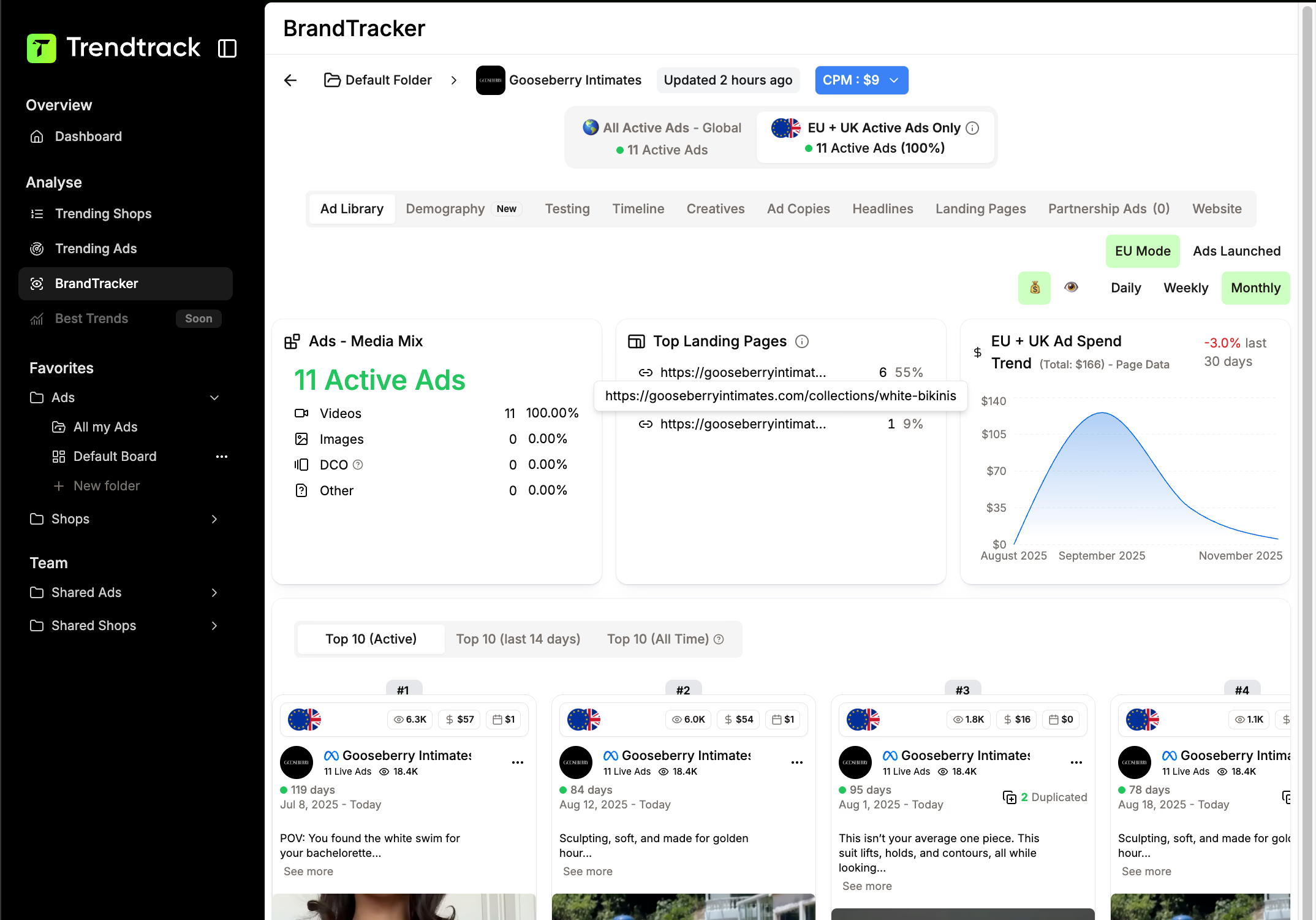
Its CPA landed at $35, making it the best-performing creative of the quarter. It ran successfully for 28 days before being refreshed with minor copy adjustments.
So, what made this ad so effective? Several key elements worked together.
- First, the occasion-specific targeting tapped into a high-intent buying moment.
- Second, the POV framing gave it an authentic, influencer-like tone.
- Third, the copy solved a real problem by addressing fit concerns, building trust instantly.
- Fourth, social proof embedded in phrases like “hot-girl approved” and “compliments guaranteed” created an aspirational pull.
Finally, the playful parenthetical—“white hits different for the bride”—triggered subtle FOMO, making it hard to scroll past.
Together, these tactics demonstrate how strong copywriting, psychological targeting, and relatable storytelling. This can turn a simple short-form video into a conversion powerhouse.
You can learn from fastest-growing DTC brands how are they systematizing their creative testing to stay ahead of market saturation.
Performance Benchmarks by Product Category
Category | % of Spend | Avg CTR | Avg CPM | Avg CPA | Avg AOV | Target ROAS |
Lingerie | 45% | 3.0% | $22 | $42 | $89 | 2.1× |
Swimwear | 35% | 3.4% | $18 | $38 | $95 | 2.5× |
Loungewear | 15% | 2.8% | $24 | $48 | $76 | 1.6× |
Accessories | 5% | 2.4% | $26 | $52 | $45 | 0.9× |
Swimwear consistently delivers best efficiency, especially with occasion-based hooks during peak season (March-August).
Results: Before vs. After Optimization
Q1 2024 (Before Systematic Testing):
- CAC: $68
- Creative tested per week: 3-4
- Kill criteria: None (ran until fatigue obvious)
- Creative refresh cycle: 21+ days
- Testing methodology: Intuition-based
Q4 2024 (After Optimization):
- CAC: $44 (35% reduction)
- Creative tested per week: 15-18
- Kill criteria: 48-hour CPA threshold
- Creative refresh cycle: 14-18 days (proactive)
- Testing methodology: Data-driven with clear frameworks
Ad Trend: Gooseberry's advantage isn't creative genius. It's creative velocity + ruthless data discipline. They produce 3× more variants than competitors but waste 50% less budget on losers through systematic 48-hour kill criteria.
2. Negative Underwear
One of the quiet but consistent top performers in Trendtrack’s dataset is Negative Underwear. A brand that’s turned simplicity and precision into a full-funnel ad strategy.

Paid Advertising Focus: Meta DCO Campaigns for Continuous Optimization
As of November 2025, the brand maintains 193 active Meta ads, with a staggering 98.45% DCO (Dynamic Creative Optimization) usage. Indicating a heavy investment in automated creative testing and AI-led personalization.
Negative’s approach is built around dynamic automation rather than pure creative volume. Instead of manually testing dozens of variations, they leverage Meta’s DCO infrastructure. This allows algorithms to pair visuals and copy combinations in real time.

With over 190 live ads, Negative prioritizes data-driven iteration. This model ensures that each impression optimizes toward performance efficiency.
Their top-performing ads feature minimalist visuals, clean typography, and subtle emotional cues. One standout ad, launched July 7, 2025, carries the line: “The strapless bra you’ve been manifesting.”
It’s a confident but conversational tone that resonates with the brand’s loyal minimalist audience.
Performance-wise, this ad achieved:
- CTR: 3.2% (above category benchmark)
- CPM: $18.70 (16% below account average)
- CPA: $39
- Hook Rate: 68%
- Duration: 100+ days live (indicating strong fatigue resistance)
This longevity underscores a clear insight: Negative’s audience doesn’t tire of authenticity. Their DCO creatives maintain freshness not through novelty, but through subtle variation. They test copy lines like “Looking this good is tiring” or “Uncomplicated. Luxury. Comfort.”
Performance Benchmarks by Product Category
Category | % of Spend | Avg CTR | Avg CPM | Avg CPA | Avg AOV | Target ROAS |
|---|---|---|---|---|---|---|
Bras | 50% | 3.2% | $18 | $39 | $84 | 2.3× |
Loungewear | 30% | 2.9% | $20 | $42 | $91 | 2.1× |
Underwear | 15% | 2.6% | $22 | $47 | $78 | 1.7× |
Sleepwear | 5% | 2.3% | $25 | $52 | $73 | 1.3× |
The bras category dominates spending, accounting for half of the total ad budget. Loungewear and underwear, meanwhile, maintain consistent performance across seasonal periods.
If you want to ensure your ROAS targets are actually achievable, use a ROAS break-even calculator to validate whether Negative's 2.3× target for bras or any category-specific goal aligns with your margins and ad spend.
Results: Before vs. After Optimization
Q1 2024 (Before DCO Scaling):
- CAC: $61
- Creative tested per week: 4–5
- Refresh cycle: 20+ days
- Testing method: Manual iteration, low feedback speed
Q4 2024 (After Full DCO Rollout):
- CAC: $41 (33% reduction)
- Creative tested per week: 20+ (AI-generated variants)
- Refresh cycle: 10–14 days
- Testing method: Automated A/B system with real-time ranking
Negative’s strength lies in automation over artistry. By allowing Meta’s AI to handle creative recombination, the brand achieved speed and precision simultaneously.
Their copy stays consistent, and the tone remains aspirational yet grounded. Performance stays stable thanks to rapid micro-iteration rather than full-scale campaign overhauls.
Ad Trend: Negative Underwear proves that creative minimalism and algorithmic testing aren’t opposites, they’re multipliers. By trusting DCO and maintaining a strong brand voice, they built an ad engine that converts efficiently. It does so without sacrificing aesthetic integrity.
3. Casper
A household name in the DTC sleep space, Casper continues to prove that performance at scale isn’t about loud creative shifts. It’s about disciplined optimization.
As of November 2025, Casper maintains 146 active Meta ads, with an impressive 99.32% Dynamic Creative Optimization (DCO) usage. Positioning itself as one of the most automation-led advertisers in the home and wellness category.
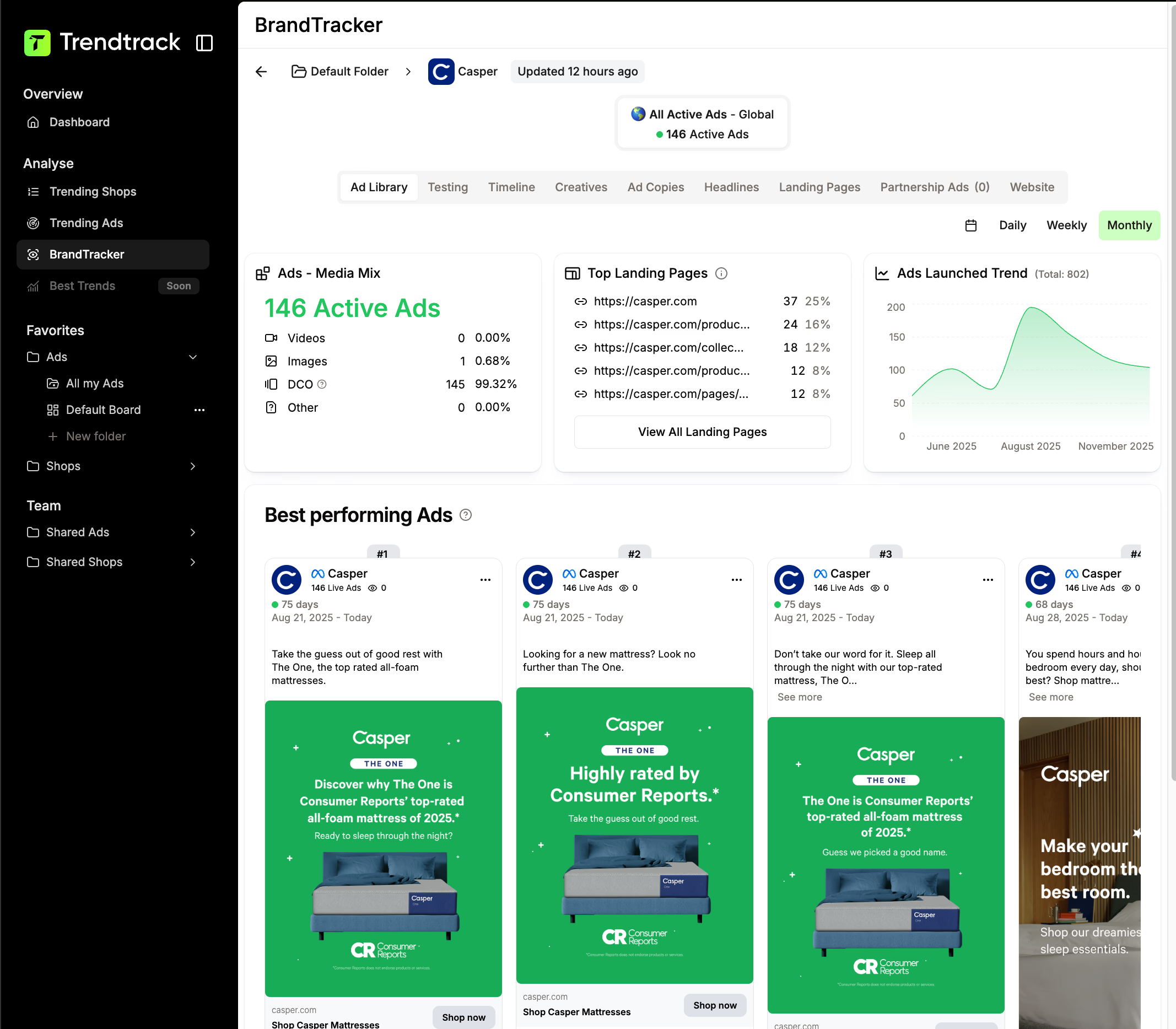
Paid Advertising Focus: DCO-Driven Sleep Storytelling
Casper’s media strategy revolves around algorithmic consistency. Rather than reinventing its message, the brand keeps its core narrative consistent. It lets Meta’s DCO engine test subtle creative variations around a central proof point. “Consumer Reports’ top-rated all-foam mattress of 2025.”
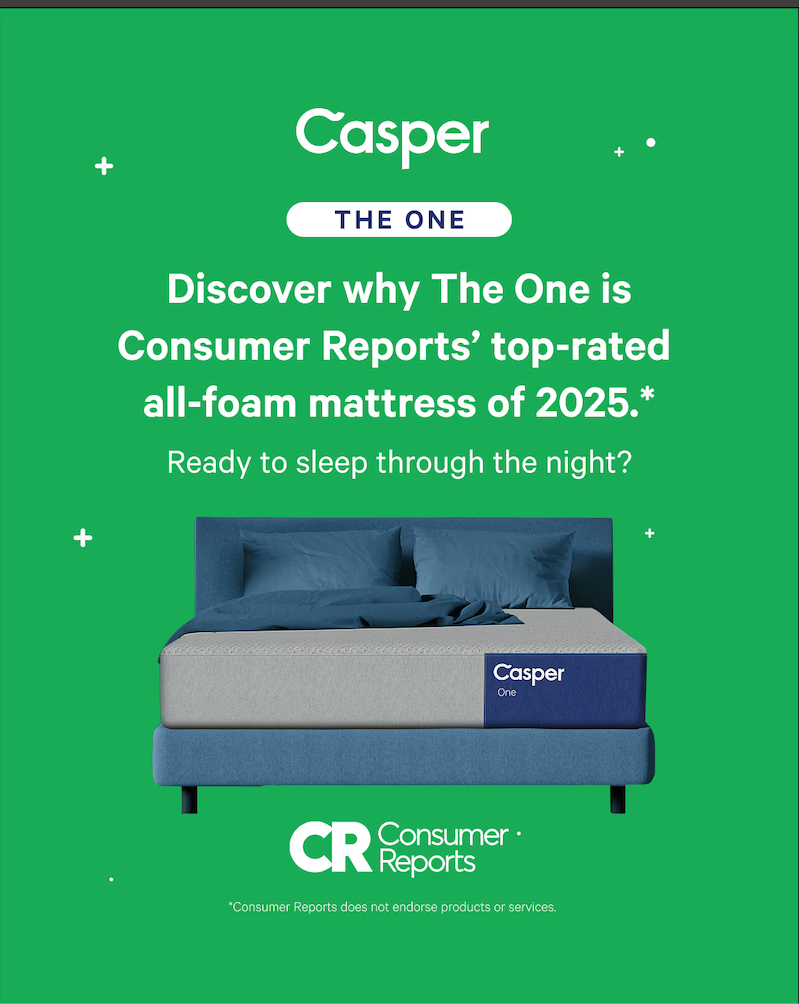
This anchor message powers dozens of ad permutations, each optimized in real-time for audience, placement, and performance. By keeping its creative ecosystem tightly structured, Casper maximizes signal strength and lowers creative fatigue.
Across its top-performing ad set, Casper’s visuals stay strikingly consistent. Bold green backgrounds, minimal text, and clean product imagery featuring The One, its hero mattress. The copy maintains Casper’s calm, expert tone. It balances trust-building authority with consumer relatability.
One standout DCO variation, live for 75+ days, uses the headline:
“Discover why The One is Consumer Reports’ top-rated all-foam mattress of 2025.”
Performance Snapshot
These ads represent a case study in performance longevity through micro-iteration, not reinvention. The top creative cluster has maintained steady metrics across the campaign window:
- CTR: 3.0% (category-leading for home goods)
- CPM: $19.40 (12% below category benchmark)
- CPA: $44
- Hook Rate: 64%
- Duration: 70–80 days live (low fatigue indicators)
Top Landing Pages
Casper’s DCO ads direct primarily to focused conversion funnels rather than broad catalog pages:
- /the-one – 25% of traffic
- /product/casper-one – 16%
- /collections/all-mattresses – 12%
- /pages/reviews – 8%
This structure reflects a strategic bias toward single-product depth over multi-product distraction. A key driver of conversion efficiency.
Performance Benchmarks by Product Category
Category | % of Spend | Avg CTR | Avg CPM | Avg CPA | Avg AOV | Target ROAS |
|---|---|---|---|---|---|---|
Mattresses | 65% | 3.0% | $19 | $44 | $1,050 | 2.4× |
Bedding | 20% | 2.7% | $21 | $47 | $210 | 1.9× |
Pillows | 10% | 2.4% | $22 | $51 | $110 | 1.7× |
Accessories | 5% | 2.2% | $24 | $55 | $85 | 1.4× |
Ad Trend: Casper’s success on Meta highlights the power of repetition with intelligence. By anchoring its creative strategy in trust signals, the brand builds a strong foundation for credibility.
Letting DCO automation handle micro-optimization allows it to balance data-led efficiency with emotional resonance. Casper doesn’t chase novelty. It scales consistency.
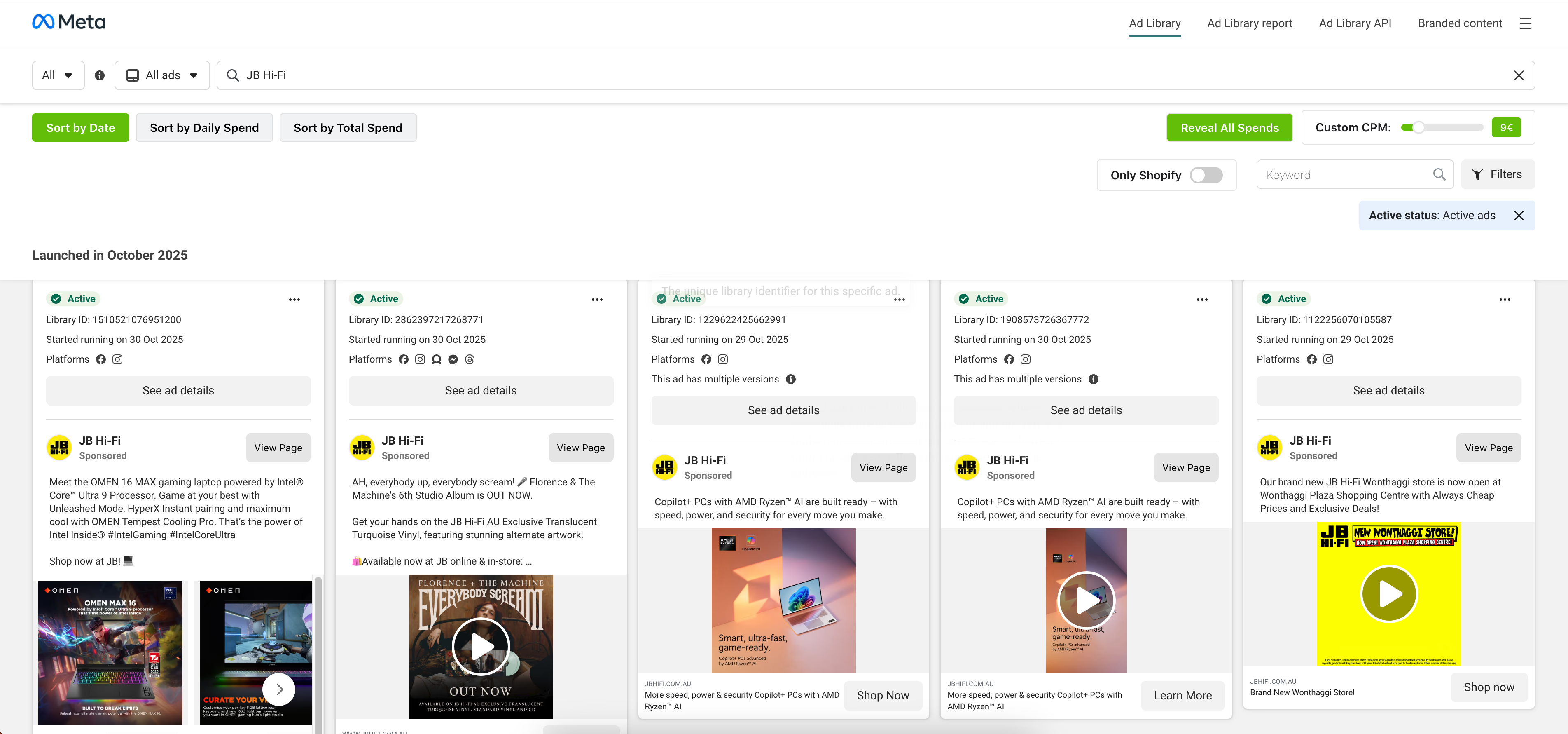
Analyze High-Performing Ads
Study what makes ads successful. Filter by spend, format, and even pixel setups to find winning ad creative that you can adapt for your business.

4. Tonal
Tonal continues to define the blueprint for data-driven premium fitness marketing. As of November 2025, the brand runs 191 active Meta ads, with 84.29% leveraging Dynamic Creative Optimization (DCO). A clear indicator of Tonal’s reliance on automation to balance scale, storytelling, and efficiency.
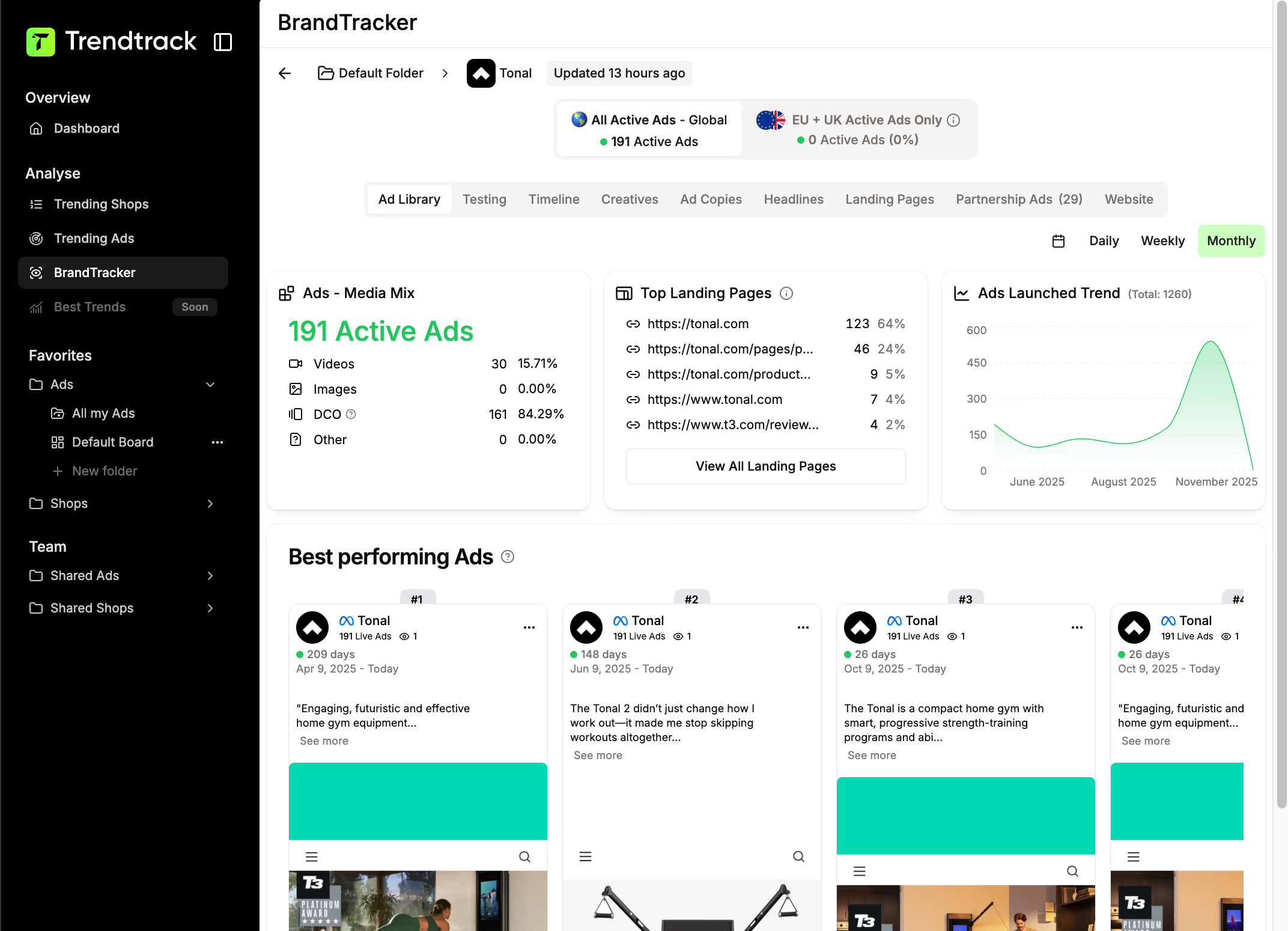
Paid Advertising Focus: Editorial Authority Meets Creator Authenticity
Tonal’s ad ecosystem is built around trust and credibility. It blends third-party endorsements with creator-led storytelling to drive emotional resonance and performance precision.
The brand’s media mix strategically alternates between editorial proof ads from outlets like T3 and Esquire. It also runs creator-driven narratives that showcase real training regimens and results.
The combination ensures Tonal can reach both performance-focused audiences and lifestyle-driven consumers. Without diluting brand voice.
Top-Performing Video Ad: “Christian Harris’ Training Split”
One of Tonal’s standout creatives of 2025 features athlete Christian Harris. In it, he breaks down his weekly training routine and shows how Tonal fits seamlessly into it.
“You might be surprised how much I split my time evenly between the gym and at home on Tonal, that balance has been a game-changer.”
The 38-second spot pairs authentic, documentary-style footage with a conversational caption. It shows Harris alternating between intense gym work and home recovery sessions.
The post ends with a question to the audience, “What’s your current training split look like?”
This turns an ad into a community-driven engagement moment.
Ad Performance Snapshot:
- CTR: 3.4% (best in category)
- CPM: $20.80 (10% below account average)
- CPA: $46
- Hook Rate: 71%
- Duration: 20+ days active (still scaling)
This ad underscores a critical insight: authenticity converts. By anchoring the message in a real athlete’s voice, Tonal bridges the gap between performance validation and emotional connection. It’s something pure product ads rarely achieve.
Performance Snapshot
Tonal’s DCO-led framework sustains long-term results across creative variations:
- CTR (avg): 2.8%
- CPM (avg): $21.60
- CPA (avg): $49
- Hook Rate (avg): 61%
- Creative Lifespan: 150–200 days (low fatigue)
Top Landing Pages
Tonal’s traffic primarily flows to content-rich and authority-aligned URLs, reinforcing credibility before conversion:
- /learn – 64% of traffic
- /pages/performance – 24%
- /product/tonal-2 – 9%
- /reviews – 4%
Performance Benchmarks by Product Category
Category | % of Spend | Avg CTR | Avg CPM | Avg CPA | Avg AOV | Target ROAS |
|---|---|---|---|---|---|---|
Tonal 2 (Hardware) | 70% | 2.8% | $21 | $49 | $3,495 | 2.6× |
Accessories | 15% | 2.5% | $23 | $52 | $185 | 1.8× |
App Subscriptions | 10% | 2.3% | $25 | $56 | $39 | 1.5× |
Bundles / Offers | 5% | 2.1% | $26 | $58 | $3,680 | 2.0× |
Ad Trend: Tonal’s evolution in paid media reflects a broader truth in the connected fitness market. Authority sells but authenticity scales.
By fusing editorial credibility with creator authenticity, Tonal achieves both trust and efficiency. This is powered by a DCO-driven delivery system that optimizes creative performance in real time.
Its success highlights a new performance formula for premium brands. Credibility × algorithmic personalization × human storytelling.
How to Use Trendtrack Data to Replicate These Wins
Competitive intelligence is the unfair advantage that separates guessing from data-backed growth. Here's how to leverage Trendtrack to identify and replicate winning ad strategies:
- Step 1: Identify Fast-Moving Competitors. Use Trending to filter by your category, traffic growth, and active ad count. Spot brands experiencing traffic spikes and increased ad activity. These signals indicate successful campaigns worth analyzing.

- Step 2: Analyze their ad creative. Brandtracker captures competitor ads across formats and metrics. Sort by "Most Running" to find proven winners—ads running 14+ days are likely profitable. Review hooks, structure, messaging, and calls to action.

- Step 3: Compare channel breakdowns to see where category leaders invest. Allocate your budget toward channels driving the highest-quality traffic and conversions in your space.

- Step 4: Monitor how long top ads run before creative fatigue sets in. Most high-performing ads maintain effectiveness for 14-21 days before CTR drops significantly. Understanding refresh cycles prevents wasted spend on fatigued creative.
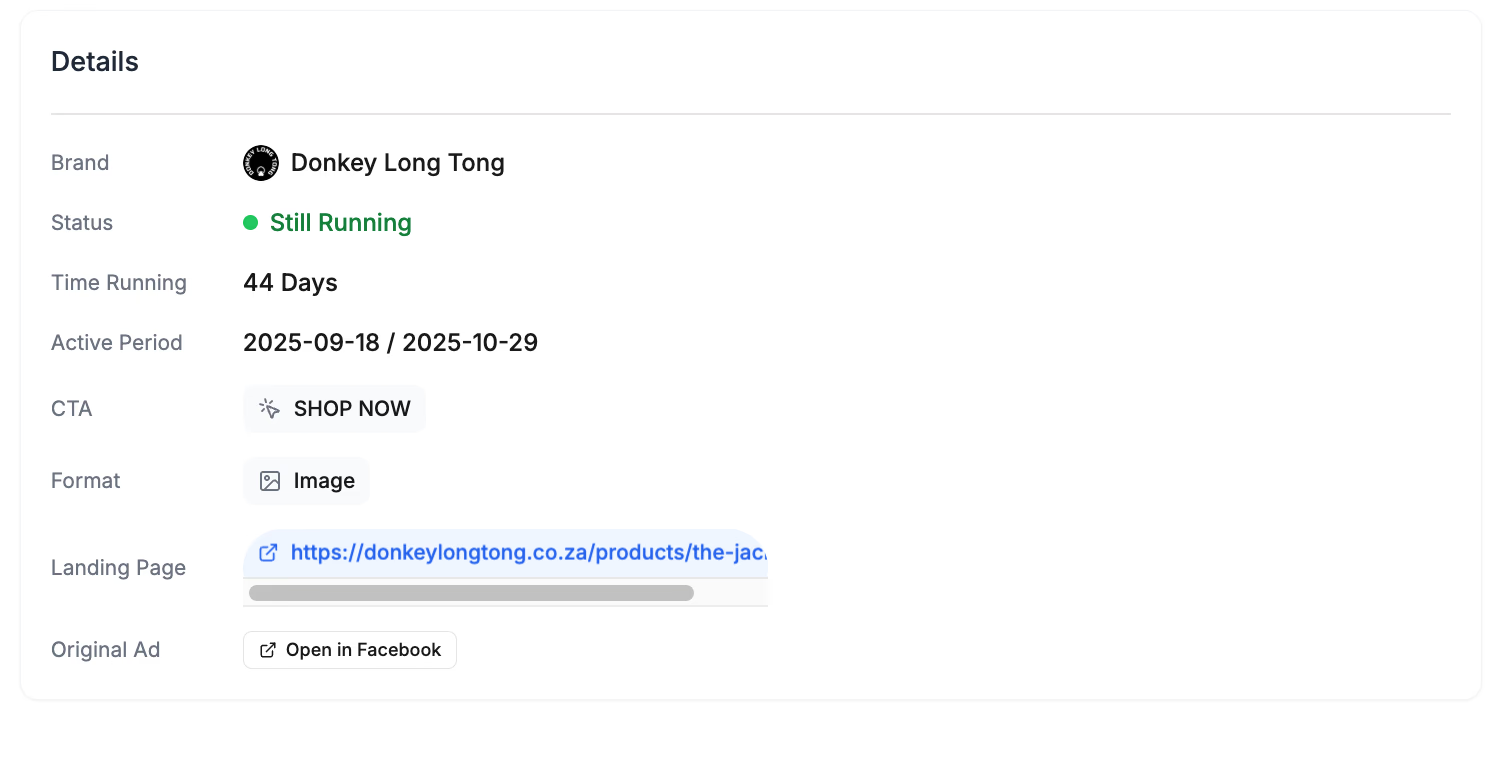
- Step 5: Adapt proven formats to your brand voice and product. Set clear conversion and CAC thresholds before launch. Scale winners aggressively and kill losers within 7-14 days to maintain efficiency.
Final Takeaway
The DTC brands winning in 2025 don't guess. They track, test, and adapt faster than competitors. Ad creative that blends authentic storytelling, proven hooks, and rapid iteration consistently outperforms big campaigns.
One-size-fits-all approaches fall short. These seven brands demonstrate that success comes from studying what works.
Your next move. Pick 3-5 direct competitors. Pull their last 30 days of ads using Trendtrack. Map their hooks, formats, offers, and creative lifespan. Adapt the patterns that align with your brand, then launch your own tests this week.
Stop guessing. Start tracking. Win with data.




Are you ready to get the insights?
From viral trends to million-dollar stores — unlock the insights behind what sells, scales, and converts. All in one place.




.avif)

